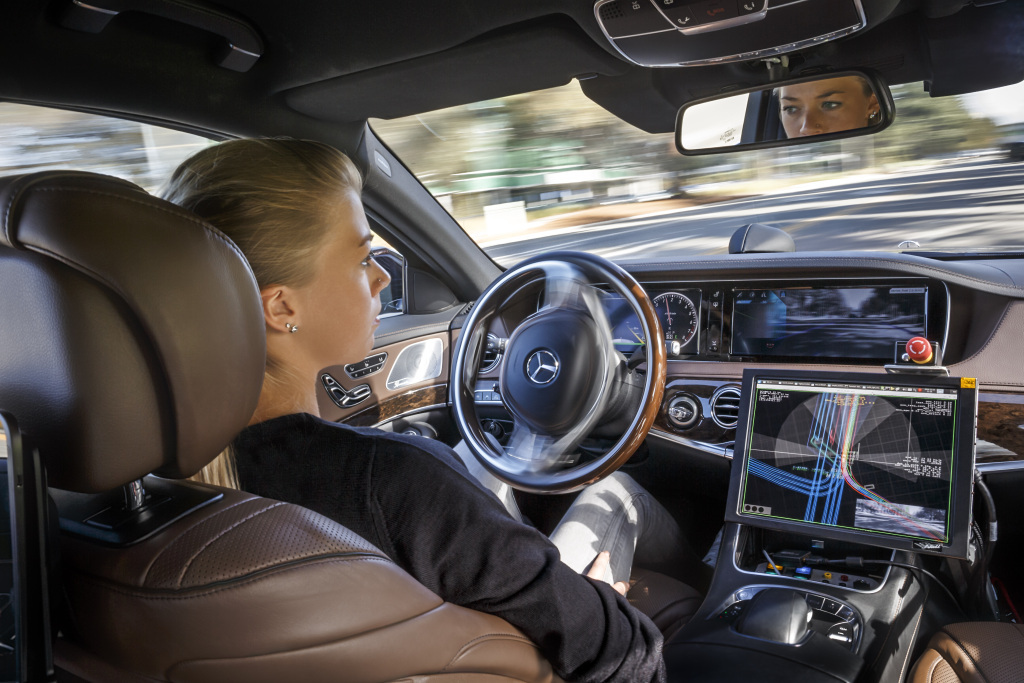In this article we are going to explain the different degrees of autonomy that a vehicle can have.
Un Autonomous vehicle is a vehicle that has sufficient characteristics to drive autonomously., that is, with minimal assistance from the driver.
These vehicles are equipped with processors, sensors, actuators and software that allow them to read, understand and make decisions, even sooner than it would take a human to process said information and execute it.
Although when we talk about fully autonomous driving it may seem like we are talking about science fiction, the reality is that we are much closer than we can imagine. The truth is, that the EQ range of Mercedes-Benz is going to present in September of this year, the new EQS, a completely electric vehicle that stands out for its level of autonomous driving.
Vehicle driving autonomy levels:
There are 5 levels of autonomous driving which are divided into: driver-only, assisted, partial automation, elevated and full automation.
Furthermore, in turn, there are three primary actors: the driver (the one who normally performs the action), the autonomous driving system and the car itself with the appropriate conventional systems.
Let's look at the different autonomous driving systems from lowest to highest degree of driving assistance:
Level 0: no driving automation
At the initial level we find level 0, at this level the driver performs all the actions and has no assistance. At most, at this level the vehicle can have sensors that detect objects on the road, but still the driver has complete control of the vehicle and it will be entirely up to him to perform one action or another. It is not surprising then that this level is, in many cases, the one that prevents the fewest accidents since it is the driver himself who is in charge of carrying out each and every one of the actions without having any type of help.
Level 1: driving assistance
At this level, The system has some driving assistance system that can only work laterally or longitudinally but never both movements at the same time.
This level is designed so that the driver can have a more comfortable drive and is an aid that improves safety behind the wheel.
Level 2: partial automation
At this level of autonomy, a driver is required, even if he or she does not perform the tasks related to movement. It is not surprising that from this level of autonomy the accident rate is considerably reduced since we are talking about the fact that we have autonomous aids that allow us to foresee or anticipate these accidents.
The partially automated vehicle has both longitudinal and lateral motion control, although it does not have detection and response to objects.
The vehicle will have the capacity to act independently since it can perform one or more tasks until now carried out by the driver.
Level 3: conditioned automation
A driver is required and although the autonomy is higher, he must be attentive to intervene.
The vehicle in question has automation systems related to the control of longitudinal and lateral movement, steering and response to objects.
This vehicle will be able to decide when it needs to change lanes, brake to avoid colliding with another vehicle or prepare for an impact in case there is no other option. Even so, the human factor will continue to be key since the system may require the driver's help.
Level 4: high automation
We are in one of the latest automations and therefore one of the highest. At this level, human intervention will not be required at any time since it will be the vehicle itself that controls the traffic and the surrounding conditions, will define the route or alternatives and will respond to any situation, no matter how unforeseen.
In the event of an error or failure in the main system, the vehicle has sufficient support to act and continue driving.
Level 5: full automation
The vehicle will have the ability, on demand, to go anywhere without the need for a steering wheel, pedals or controls, through the interface through which our orders will be entered.
Although it may seem impossible, these systems already exist and in case an error occurs in the system, these types of vehicles have another security backup system.
What is the most common level of driving automation?
Level 2 is the most common among vehicles sold today. In this second level of partial automation we would include the A-Class or the B-Class. On the other hand, level 3 of autonomy (conditioned automation) would be reserved for the Mercedes-Benz flagship, the luxury sedan called Lessons with its Drive Pilot system capable of driving completely autonomously, although only authorized in some countries.









